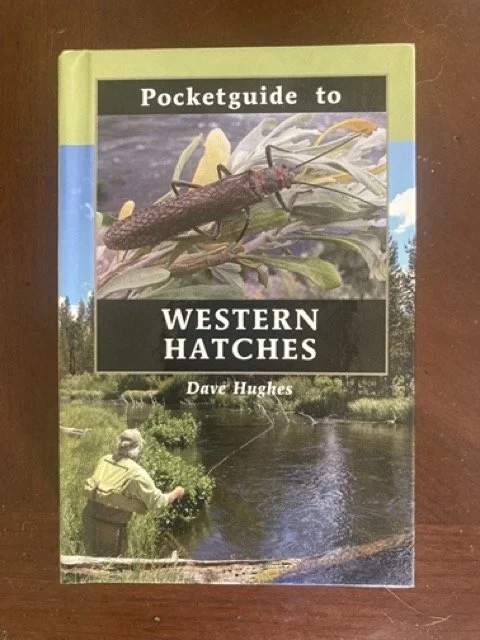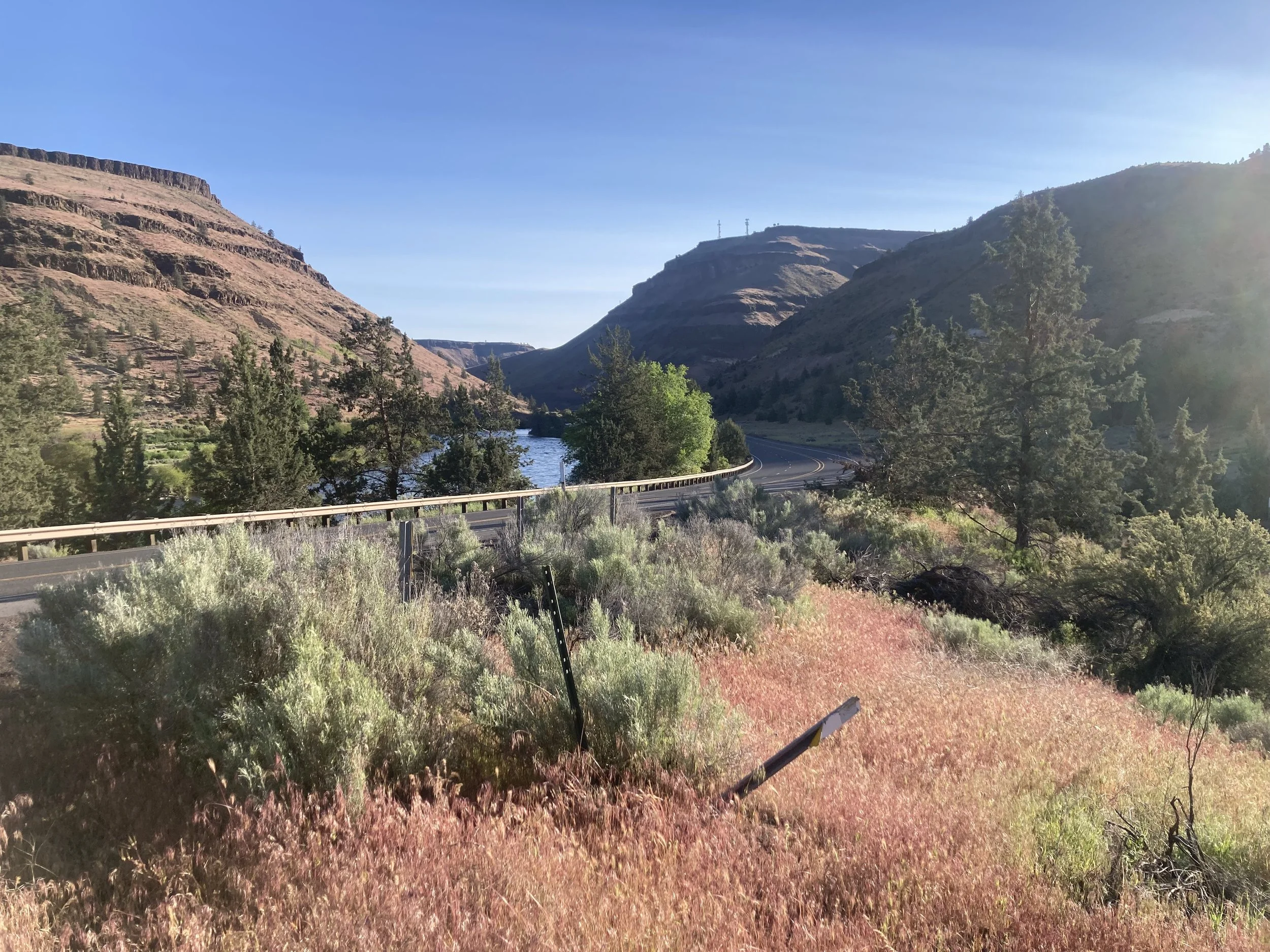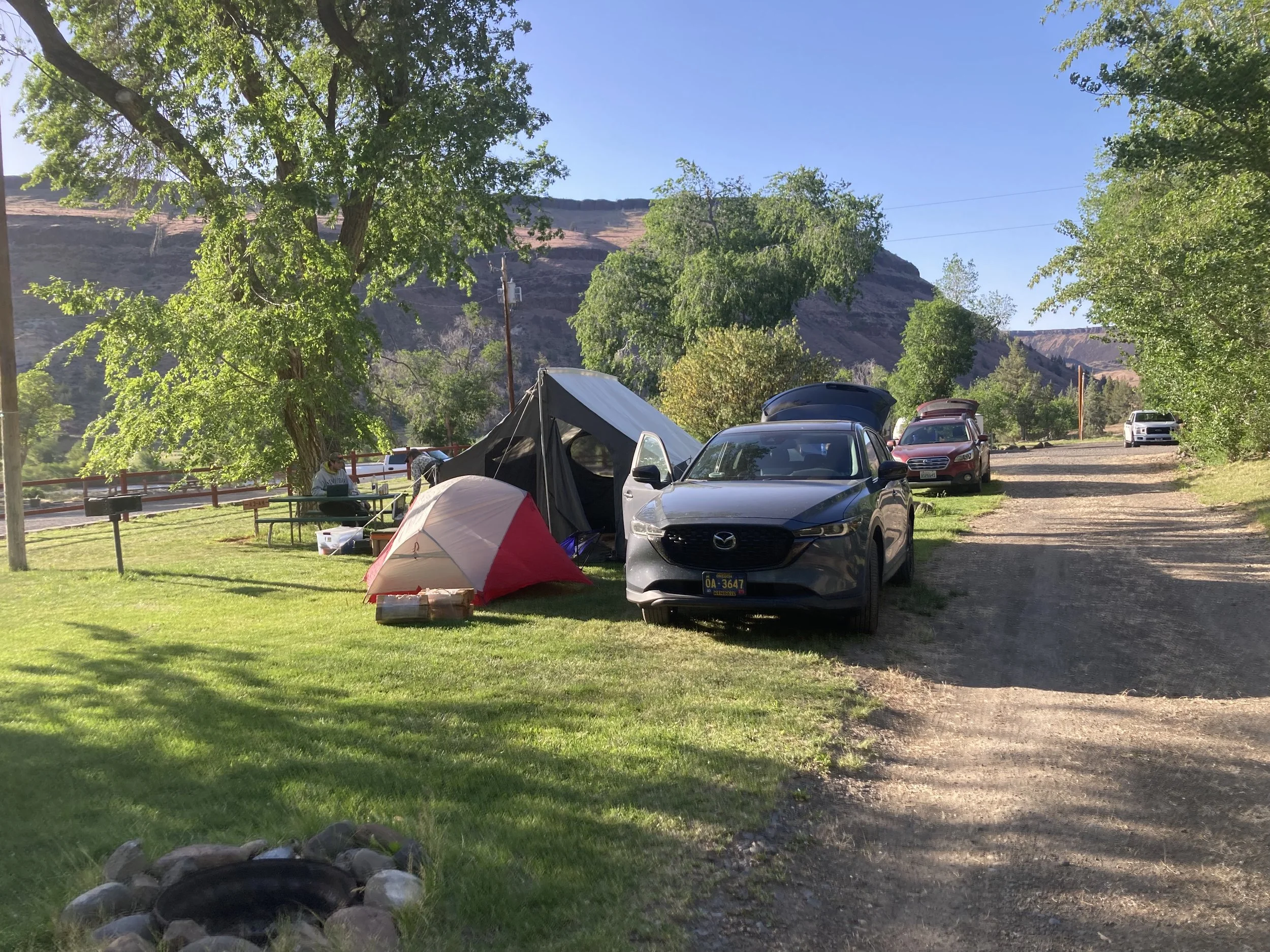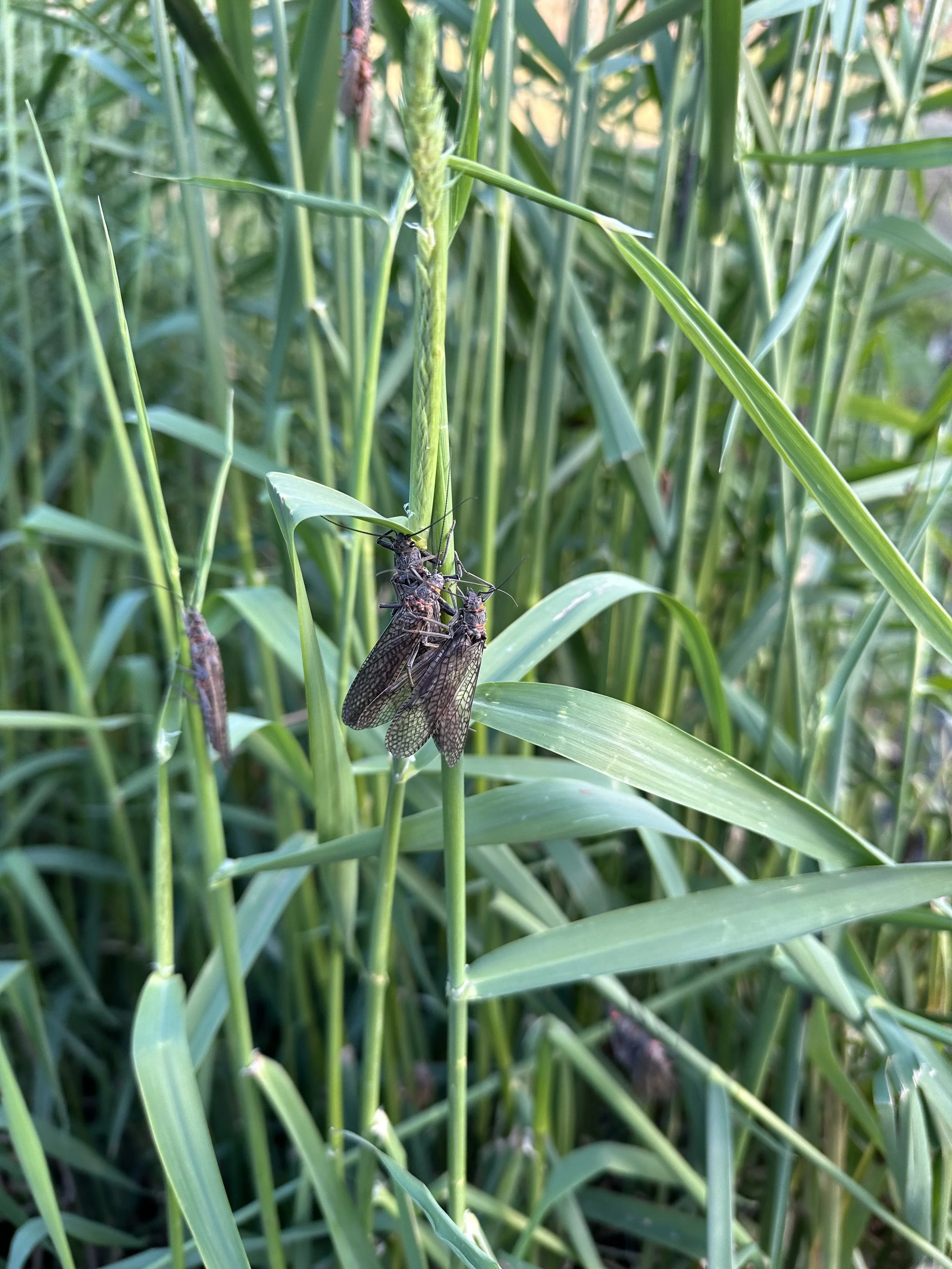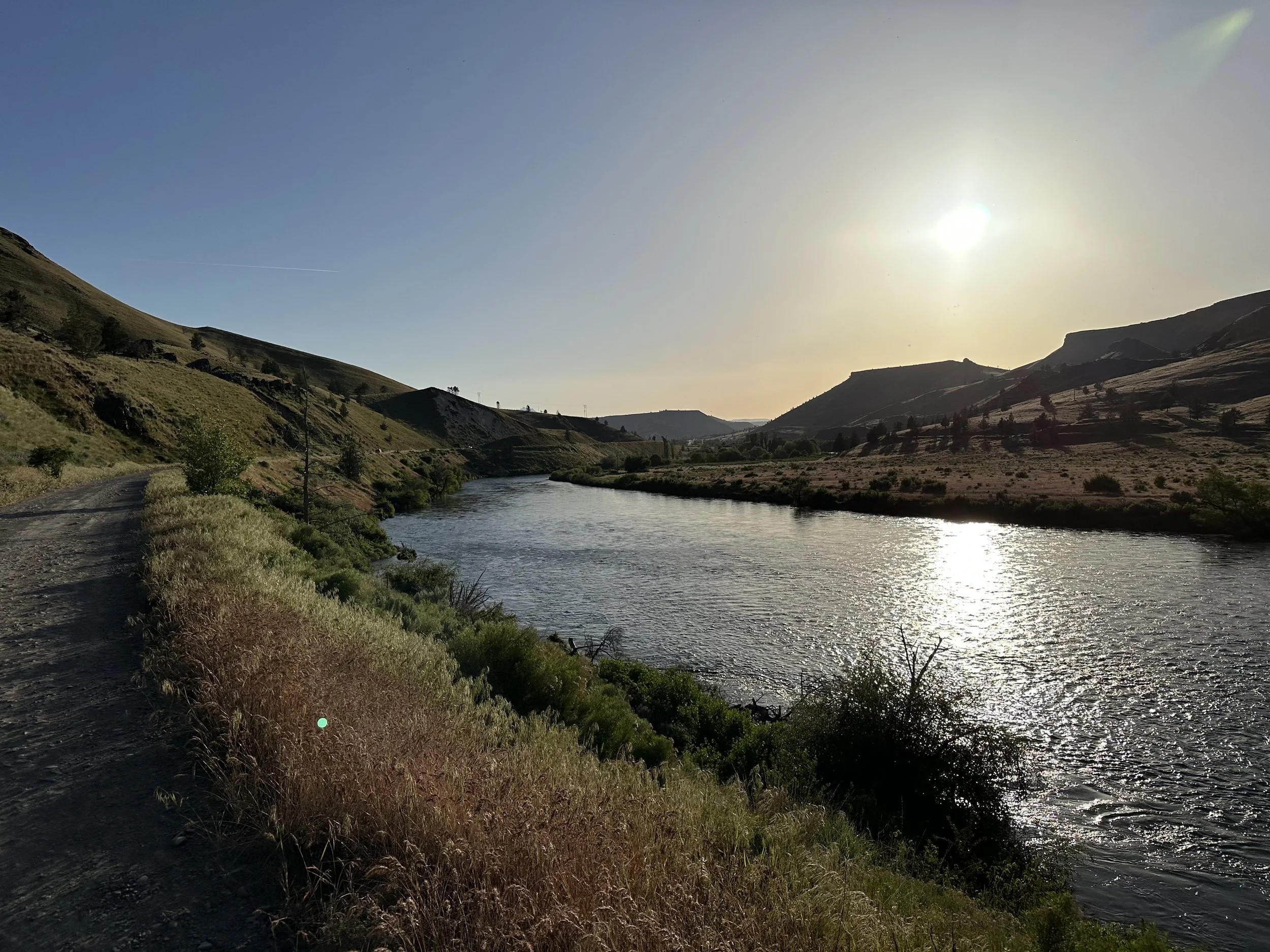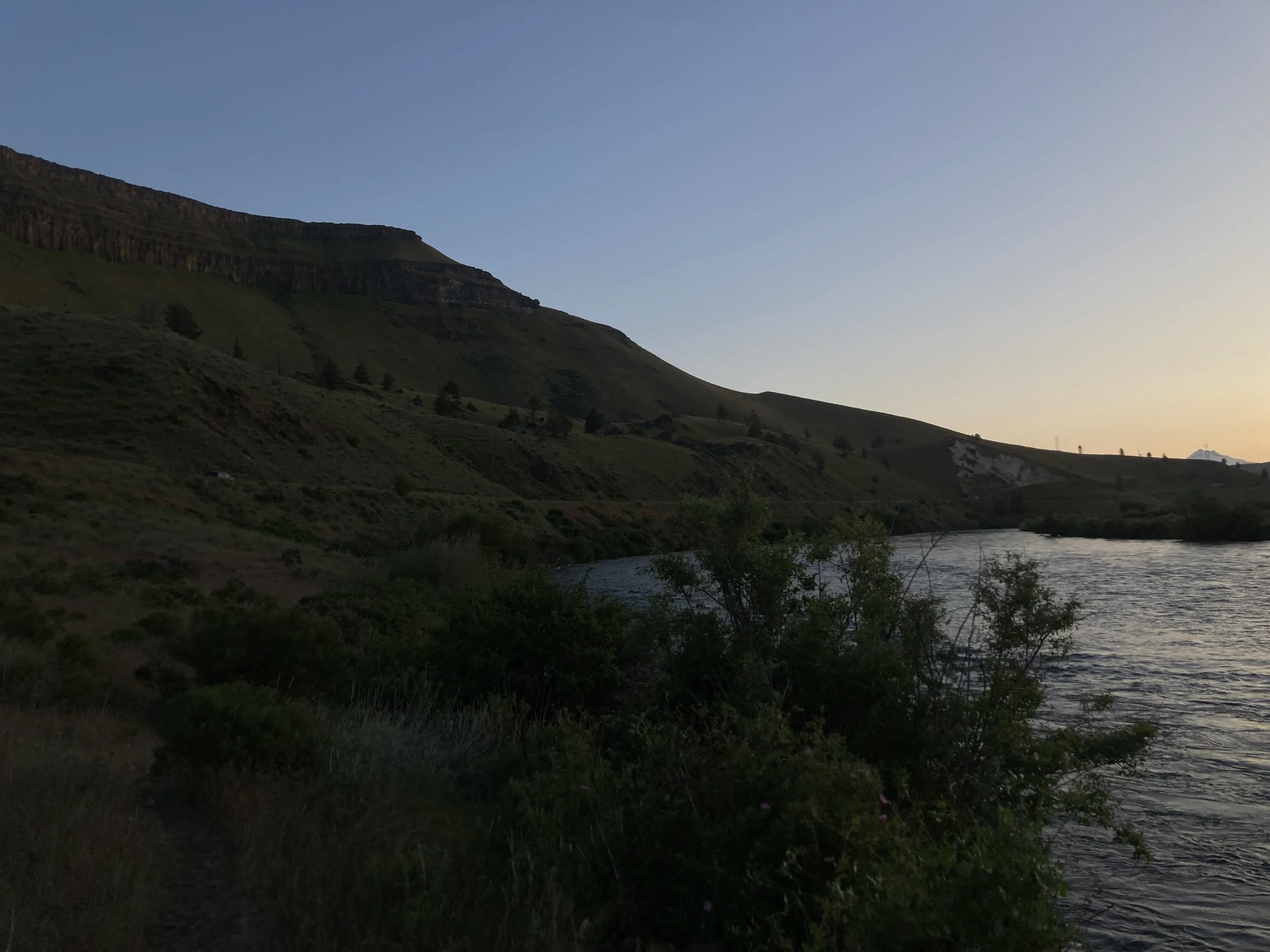A Weekend at the Salmonfly Saloon - Part One
Introduction
In late March, Ethan, Sam and I started to plan out a weekend trip to a river somewhere in Oregon or Washington. It’s Ethan’s first year with the fly rod, Sam’s first year with a proper wading setup, and my first year learning about hatches and hatch timings, so we all have things to learn about the sport (as will always be the case). The prospect of getting together with buddies and all learning various aspects of the sport together is one of the best parts of fly fishing. We were considering our options; the Yakima is close to me and Sam, has ample camping opportunities, and I have floated it several times; the Klickitat was opening soon and I had heard rumblings about its late spring fishing season. Ethan, who lives down near the Deschutes River, relayed the buzz of the upcoming salmonfly season (with the peak really only being about a week or two weeks long), which really caught my attention.
Earlier in the year I picked up a copy of Dave Hughes’ Pocketguide to Western Hatches, a beautiful little book that documents the the most “important” Western hatches. A “hatch”, for those who may not know, is defined by Hughes as “a specific stage of any food form that is abundant and available and therefore fed on selectively by trout”. Here is an excerpt from the Pocketguide on Salmonflies:
Salmonflies…hang around in grasses, shrubs, and alders overhanging water. They’re awkward climbers and poor fliers. They fall to the water often and have trouble extracting themselves…Fish them in edge currents, along grassy banks, and beneath overhanging alder trees and shrubs. Trout will sometimes detonate on them and at other times simply sip them.
The Deschutes Salmonfly hatch is the most anticipated window of fishing that the Deschutes has to offer, and we were set to have this be our destination. The following is a retelling of the first part of our trip.
The cover even has a Salmonfly on it!
May 18th
Sam and I planned to leave my house in Redmond at around 11am. The hope was to meet Ethan at our reserved campsite at the Deschutes River Fly Shop and Camp at around 5pm so that we could explore the river for a few hours before it got dark. I had managed to do most of the necessary packing and preparations the night before, so all we needed to do was hitch up the trailer, load the truck, and get on the road. It was a slightly cloudy day with a few prolonged sunny stretches. The drive from Redmond down to the Madras area is pretty straightforward, but there are two equally viable routes. The first route, the route we opted for, follows I-5 south straight down to Portland where you eventually veer East on US 26. Its about 4.5 hours, sometimes longer depending on the traffic through Tacoma and Portland. The other route heads east first via 90 over Snoqualmie Pass, where you then head South through the Dalles. The drive went by quickly as we snacked on cookies and chips, and the weather got more and more inviting the further south we travelled.
One particularly memorable portion of that drive is the moment you emerge from Mount Hood National Forest and enter Warm Springs Reservation. The difference between the two biomes is stark and seems to lack any real transition period. One moment you are surrounded by a dense forest of pines, the next you are thrust into a sprawling prairie, a high desert expanse that seems to be made of right angles knee-high shrubs. Driving through this high desert it seems impossible that anything other than a small spring creek could exist, let alone a grand river home to a kingdom of trout.
At about 5:30, we came upon the canyon. The geology, though would be better described by some of my friends, is shocking. The road down to this seemingly hidden valley feels like a secret, like something no one else could possibly know about. Of course, we are the strangers in this land and others are well familiar with this area. As we descended further, it became apparent that there was something at the bottom providing life to the valley. Populating the lower reaches were bright green shrubs and alder trees, the products of a bountiful oasis, of a spring of life that we were soon to explore.
As the gradient of the winding road that descended into the canyon began to level, we spotted our host, the Deschutes River. It was full of crystal blue water, with a subtle speckled green and white hue due to the reflection of the lush shoreline foliage and the shining sun. The steady flow of water seemed almost self aware of its majesty.
A view of the canyon road, near the entrance of Deschutes River Fly Shop and Camp
We pulled into camp at around 6pm to find Ethan, clad in waders, with fly rod in hand, walking up the dusty gravel road to where we had parked. He had a beer in his hip bag and the expression of someone who just caught a fish. We decided to quickly set up camp before heading out to explore part of the river.
Deschutes Fly Shop and Camp offers grassy campsites (when in rattlesnake territory the value of this cannot be overstated), RV sites, a shuttle service, deli and fly shop. Our campsite, which Ethan had already pitched his tent on, had a wrought iron grill, picnic table and lovely grassy footprint. After about 20 minutes of teamwork assembling the tent we brought, Ethan and I hopped into his car and ventured out to explore the river, while Sam stayed behind to take care of some work via the shop’s wifi.
We headed back out onto the road that led us to camp. This road runs alongside the Deschutes and has many bankside pull offs. Anglers were out and about, with cars occupying several of the pull offs. The road soon offered a right turn that branched off to a skinny dirt road perched above the river. This road is etched into canyon, one car length in width, and offers substantial access to the river. Accessing the Deschutes from many sections of this road calls for the angler to navigate a moderate to steep gravel slope, covered in sagebrush, warms stones and boulders, and consequently rattlesnakes. As the sun was getting lower, we travelled on this road for only a mile or so as it is slow going on the beat up road. We pulled over, slid our waders on and rigged up our rods.
It wasn’t difficult from where we parked to get to get to the water. Once we made it down right alongside the river, we found a nice path that seemed to offer excellent access to many fishing holes up and downstream. We weren’t picky as we both quickly found nice spots to begin our evening of fishing, about 30 feet apart.
Ethan and I talked up at the car about our fly selection. This is always an exciting conversation to have with a fishing buddy. What are they gonna go with, what am I gonna go with? Do we diversify to better the group odds, or do we have enough confidence in our selections to double up and try similar approaches. In this case, we both opted for some of our big salmon fly patterns. we cam to fish the salmon fly hatch right? Might as well toss on the beefy dries and see what happens.
The nature of this river, and consequently the nature of this fishing, was a bit foreign to me. I was unused to the tall grass and occasional alder that lined the banks, and I was equally unaccustomed to the lack of space I had available for my backcast. The dropoff in this section was fairly severe, so I had to make sure to stay pretty close to the bank. I am most experienced fishing freestone rivers in Washington, which tend to provide quite a bit of space for backcasts, as the smooth stones and rocks that form their banks provide a nice buffer between the water and the bank side foliage. With this in mind, my first couple of casts were feelers to get a better understanding of my surroundings.
I caught up only once on the tall grass directly behind me, and when I turned to retrieve my fly I noticed the orange detailing of a large salmon fly perched on one of the blades of grass next to where my fly was caught. I almost reached for the real salmon fly instead of my imitation! I then noticed that this guy was not alone, in fact there were hundreds, thousands, countless others perched in just this small area of grass. This had to be a promising sign I thoght.
We spotted some rising trout deeper into the river, but could tell they weren’t rising for salmon flies. The casts we were both making were nearly directly upstream, targeting the softwater beneath the alders or besides the grasses, areas where salmon flies might fall into. We even saw a really nice rainbow rise right in between us, flipping fully out of the water as if in slow motion, the big red band nearly impossible to miss.
The light was fading, but the activity was still excellent. Swallows were in a frenetic state, picking off pale morning dun (PMD) emergers and spinners. Trout were rising to target the PMDs as well, but no one was interested in what Ethan and I were offering. I decided to switch to a simple nymphing setup with an attractor pattern tied on about three feet below my Purple Oros indicator. I like the Oros indicators, as they allow anglers to quickly switch their depth in waters that they are either unfamiliar with or are covering quickly.
My main piece of advice to new anglers, and one that I constantly need to remind myself of, is to adapt. If something is not working, change it. What can be changed? Well, many things, but first and foremost presentation and location. If I am liking my spot, but my current presentation isn’t producing, I like to switch up what I am throwing. In this case, I did not want to change spots, since a bit earlier I was about to walk up the riverside path when I encountered a rattlesnake and promptly turned back to my rattlesnake free spot on the water.
This change, from large salmon fly dry to small attractor nymph, produced almost immediately. After a nice bobber down in the soft water about 10 feet off the bank, I was able to land a beautiful little rainbow. The fish was probably around 9 or 10 inches, and it was the only one to take any of our flies that evening. Soonafter, Ethan and I reeled in our lines and hiked back up to the car. The sky was a beautiful blend of orange and purple, as the day’s last bit of sun snuck behind the top of the canyon walls, beckoning life within to sleep.

